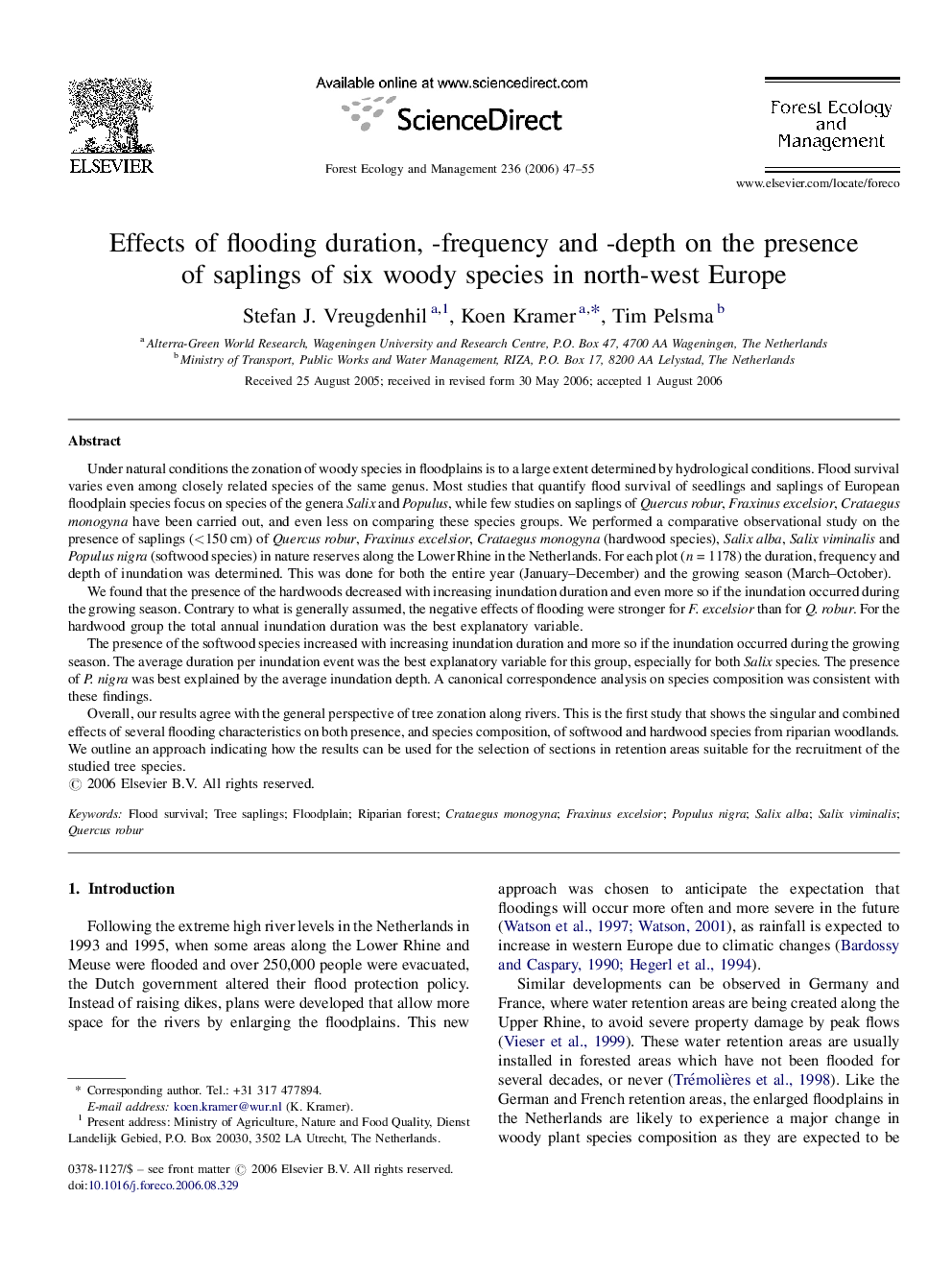| Article ID | Journal | Published Year | Pages | File Type |
|---|---|---|---|---|
| 90375 | Forest Ecology and Management | 2006 | 9 Pages |
Under natural conditions the zonation of woody species in floodplains is to a large extent determined by hydrological conditions. Flood survival varies even among closely related species of the same genus. Most studies that quantify flood survival of seedlings and saplings of European floodplain species focus on species of the genera Salix and Populus, while few studies on saplings of Quercus robur, Fraxinus excelsior, Crataegus monogyna have been carried out, and even less on comparing these species groups. We performed a comparative observational study on the presence of saplings (<150 cm) of Quercus robur, Fraxinus excelsior, Crataegus monogyna (hardwood species), Salix alba, Salix viminalis and Populus nigra (softwood species) in nature reserves along the Lower Rhine in the Netherlands. For each plot (n = 1178) the duration, frequency and depth of inundation was determined. This was done for both the entire year (January–December) and the growing season (March–October).We found that the presence of the hardwoods decreased with increasing inundation duration and even more so if the inundation occurred during the growing season. Contrary to what is generally assumed, the negative effects of flooding were stronger for F. excelsior than for Q. robur. For the hardwood group the total annual inundation duration was the best explanatory variable.The presence of the softwood species increased with increasing inundation duration and more so if the inundation occurred during the growing season. The average duration per inundation event was the best explanatory variable for this group, especially for both Salix species. The presence of P. nigra was best explained by the average inundation depth. A canonical correspondence analysis on species composition was consistent with these findings.Overall, our results agree with the general perspective of tree zonation along rivers. This is the first study that shows the singular and combined effects of several flooding characteristics on both presence, and species composition, of softwood and hardwood species from riparian woodlands. We outline an approach indicating how the results can be used for the selection of sections in retention areas suitable for the recruitment of the studied tree species.
